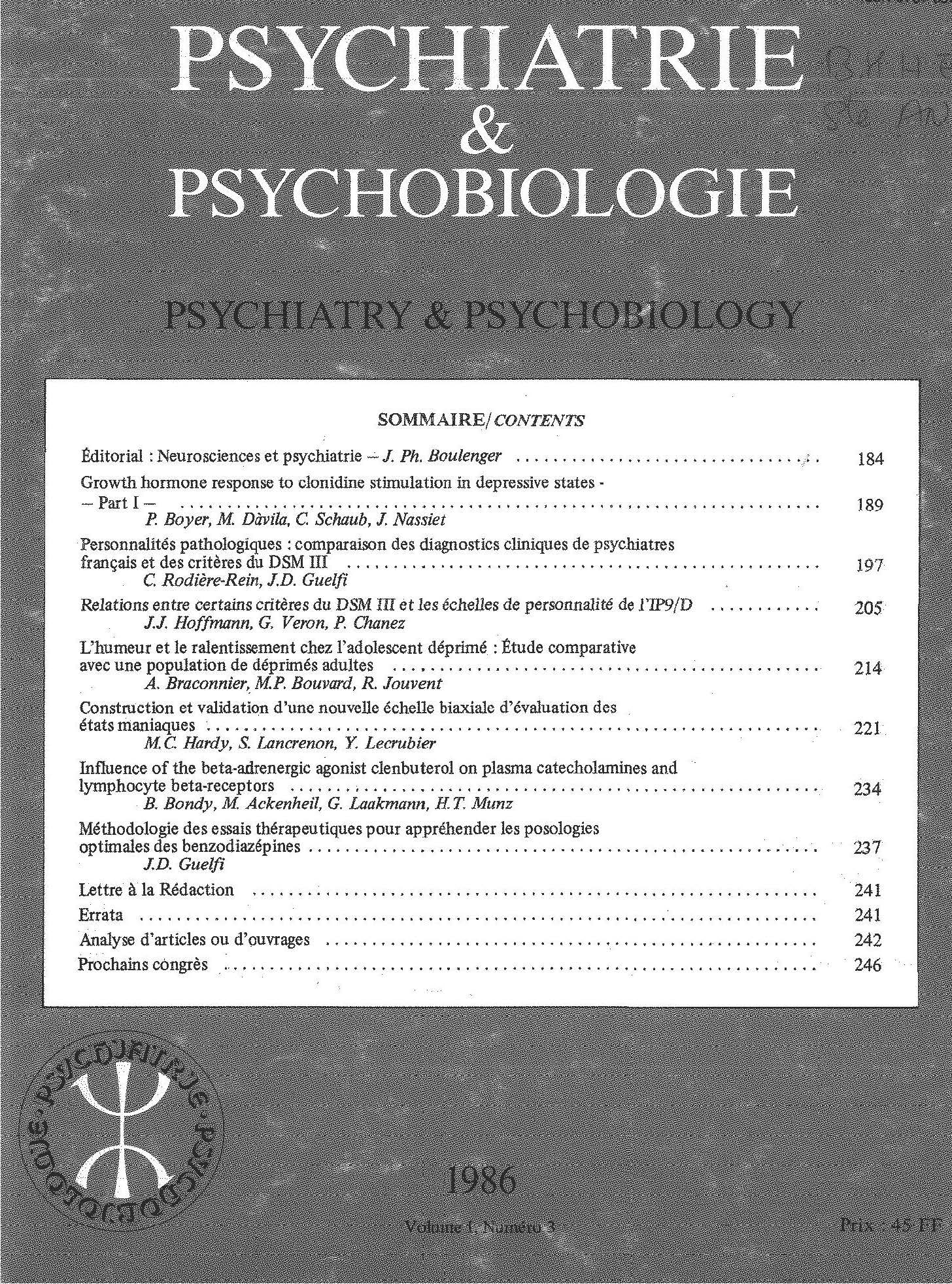Article contents
Helpless behavior induced by repeated restriction of activity in rats: specific reversal by antidepressant drugs
Published online by Cambridge University Press: 28 April 2020
Summary
An hypothesis based on the original stress model of depression, learned helplessness, proposed that exposure to uncontrollable stress provides the basis, in animals as in humans, for learning that stress is uncontrollable (helplessness); this learning has a number of debilitating consequences, including depression. This study suggests that rats subjected to daily restraint sessions (1h × 5 d, in 20 × 10 × 10 cm boxes) displayed a quiescent behavior vvith few attempts to escape from the box during the restraint periods, and subsequently exhibited escape deficits in a shuttle-box. These deficits were eliminated by clomipramine (8 or 16 mg/kg), imipramine (16 mg/kg) and nialamide (16 mg/kg) given twice daily subsequent to the last restraint session. In contrast, diazepam (2 mg/kg/d) or sulpiride (8 mg/kg/d) did not reduce helpless behavior induced by daily restraint sessions. In addition reduction in locomotor activity has been reported in rats subjected to restraint. It is suggested that the experience of loss of control thought to result from unsuccessful attempts to escape the stressor could be the critical aspect of behavior sensitive to antidepressants.
Résumé
Les résultats de cette étude ont montré que soumettre des rats à un stress incontrôlable autre que des chocs électriques inévitables, pouvait entraîner chez ces animaux un état de renoncement appris (learned helplessness). L'événement aversif incontrôlable est une restriction forcée, sans que ce soit une immobilité complète, de l'activité des rats, pendant 1 h et répétée pendant 5 jours. Dans un deuxième temps (48 h après la dernière séance de contrainte), les rats sont soumis à des séances d’évitement actif dans une enceinte à deux compartiments (shuttle-box) au cours desquelles le passage d'un compartiment à l‘autre permet à l‘animal d‘échapper à un choc électrique. Alors que les animaux témoins apprennent très rapidement à échapper, ceux soumis aux séances de contrainte échouent régulièrement dans cette tâche. Ce déficit est spécifiquement supprimé par les anti-dépresseurs étudiés (clomipramine, imipramine, niamide) administrés 2 fois par jour après la dernière séance de contrainte. En revanche, le diazépam et le sulpiride n‘ont pas réduit le déficit induit par la contrainte. Parmi les déficits comportementaux que présentent ces animaux, une diminution de l‘activité motrice et une augmentation de la latence précédant un mouvement ont été rapportées. Cette étude suggère que cette nouvelle procédure pourrait induire un état helpless et pourrait être également une alternative intéressante comparée aux procédures classiques utilisant des chocs électriques inévitables.
Keywords
- Type
- Original article
- Information
- Copyright
- Copyright © European Psychiatric Association 1990
References
Références
- 5
- Cited by



Comments
No Comments have been published for this article.